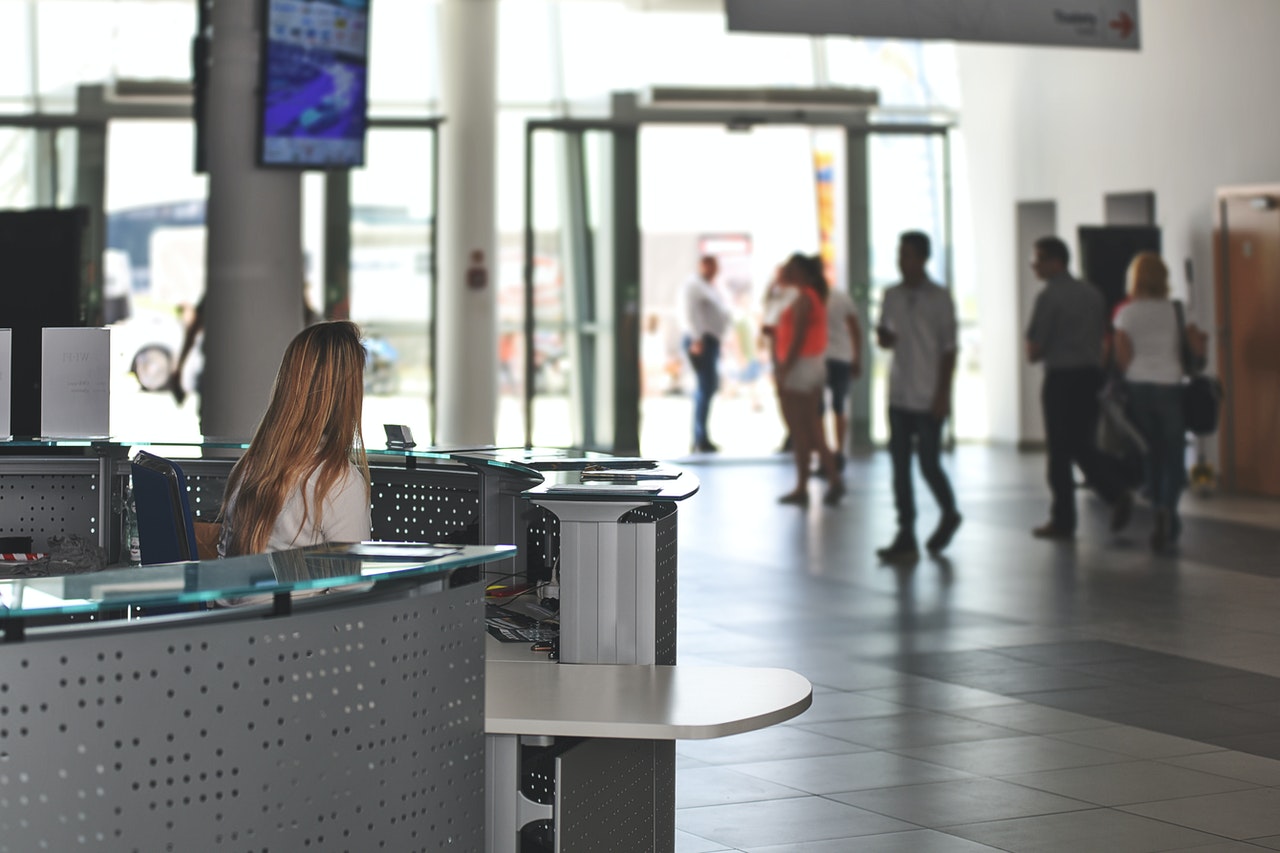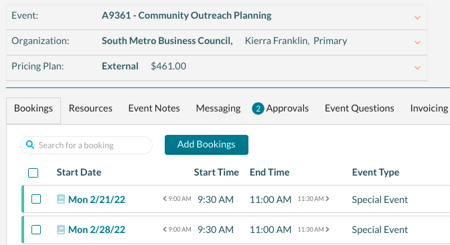Do you remember when we thought that technology was going to save us huge amounts of time and make everything so much easier? While it may be true that tech enables us to accomplish far more today than we did even just a few years ago, that doesn’t mean we have less to do. In fact, for many of us, the opposite is the case. Our “to do” list continues to get longer and there don’t seem to be enough hours in the day to get on top of it.
Fortunately, there are things you can do right now that will allow you to take back control of your department’s most precious resource: time. Time is money, after all, and with COVID straining organizational budgets, becoming more efficient will also improve your bottom line.
For over 30 years, we’ve worked with schedulers and event services departments in hundreds of organizations to help them get a handle on scheduling their shared rooms and resources. In doing so, we’ve noticed that most of these organizations make the same four mistakes, which cost them time, money, and sanity.

In this article you’ll learn:
- The secret to keeping everyone on the same page regarding what’s happening with events
- The best way to reduce the number of phone calls and emails about events
- How to ensure nobody drops the ball on your high-profile events
- Proven tactics for improving communication with your service providers and setup staff
The techniques we’ll share are things that you can take advantage of right now with your current scheduling system. However, if after reading this report you find that your existing tool leaves something to be desired, contact us to set up a free personalized demonstration of the 100% cloud-based Mazévo scheduling system.
Now, let’s address those four scheduling snafus.
Mistake #1: Your Scheduling Information Is Not Accessible to People Who Use Your Space.
The people who want to schedule meetings and events in your facilities often come from a variety of backgrounds. They may be staff, students, or members of other organizations. In today’s connected world, most will prefer to find the answers they’re looking for on their own. If they can’t easily locate the information online with their computer, tablet, or phone, they’ll contact your staff for answers.
Each call or email is an interruption that has an impact on productivity. While it may take only a few minutes to handle the inquiry, they add up over the course of a day. Plus, according to a University of California Irvine study, it takes an average of over 23 minutes to get back on task after an interruption! By reducing the number of customer interactions, you’re effectively giving yourself many hours of extra time back every week.

How to Fix This Mistake
Step 1: Understand what scheduling-related information your users need.
At a minimum, most users of your space will need to see a list of currently scheduled events and information about rooms and resources they can reserve. A view of available rooms is also helpful, along with details on how to request your space. However, to ensure you know exactly what people need, start keeping track of all the reasons they call or email and how long those inquiries take to address.
Step 2: Find out how you can make the information more accessible.
Ask yourself these questions about information accessibility to see where you can improve, and then take action:
Is the information customers are inquiring about available from our website?
Can they get to this information from their mobile device?
If the information is already available online but people are still contacting us, why were they unable to find it?
How could we make this information more accessible?
Even if you aren’t able to give users everything they need initially, any increase in what you share will make them more self-sufficient. You should also ensure that the information is available both to desktop computer users and those on smartphones. Mobile internet usage has shot up 222% over the last 7 years and each year climbs higher. Having a website that’s only optimized for a desktop user is ignoring the explosion of mobile web usage over the last 10 years, and you’ll surely alienate many users.
And, just having information on your web page is not enough. Too often the information people need is available but not in a usable format. For instance, we’ve seen universities post a calendar that can have over 200 events on a single day. On one hand, you could argue that this is “making information available,” but asking users to hunt for the event they’re interested in among 200 entries isn’t realistic.
Scheduling information must be presented in a way that’s useful and easy to understand. If you achieve that goal, you’ll save countless hours each month for your busy staff.
Mistake #2: You Have No Online Reservation Process
If you require people to contact you by phone or email to make a reservation request, that process is inefficient right from the start. Then there’s the issue of changes to the scheduled event. More often than not, anything from minor tweaks to a major overhaul to an event will be required before it takes place. And to coordinate those changes requires more phone calls and emails.
Plus, without an online reservation process, you’re forced to spend time manually entering the information you’ve received into your scheduling system. Not only is this a drain on your resources, it opens the door to misinterpretations and typing errors.
How to Fix This Mistake
Move the scheduling process online.
When it comes to improving scheduling efficiency, even a static PDF request form is better than nothing. Keep in mind that a good form will ask for the minimum amount of information needed to process the request.
Most modern scheduling systems have some kind of a built-in request form or process. If you have access to this type of functionality, be sure to use it. By implementing your system’s integrated request form, you eliminate the need to re-key the request into your scheduling system.

Some scheduling departments that use an integrated scheduling form for the first time are concerned that people will assume that submitting a request means the space is theirs to use. In our experience, this rarely, if ever, happens. It’s typically quite obvious to the user that what they’ve done is request the space, not reserve it. They understand that approval is pending.
Other advantages of using an online request process
Simplified changes. Most systems allow users to submit changes to their event as necessary. When a change is submitted, this moves the event back into a pending status to allow event coordinators to review the modification.
Scheduling procedure enforcement. An online system can typically be set up to require a certain amount of lead time for events. This ensures you have plenty of advance notice in order to review and address the request, and it prevents “fire drills” like when someone contacts you to make a same-day reservation.
Finally, be sure to accommodate your mobile users. As noted previously, the majority of web traffic now originates on mobile devices. Your online request process and form should provide a great experience for all users – no matter how they access your site.
Mistake #3: You Don’t Make Information on Room Availability Accessible
Imagine that you’re planning a trip and looking for a hotel. You go to the hotel website and see plenty of great information about the hotel and its rooms, but there’s no way to tell if they have any rooms available on the dates you’re interested in. Instead, there’s simply a message saying, “Contact us for availability.”
How would you feel about that experience? Probably not great. Unfortunately, this is how many organizations operate with their meeting space.
If you aren’t providing easy access to information on space availability to your internal customers, you’re missing a huge opportunity to improve customer service and reduce the amount of time you spend processing requests. When people don’t know what’s available, the burden is on you to provide that information to each person looking to book a room. The result: more phone calls… more emails… more time wasted.

How to Fix This Mistake
Make it easy for people to check availability online.
When a customer enters the dates and times of their event, they should be given a real-time display of room availability. This will dramatically reduce the amount of time you spend responding to inquiries.
Having room availability information accessible online can be a source of concern for some scheduling departments for a couple reasons. First, they fear that if people can see what rooms are available, they’ll circumvent the request process and just use the space without making a request. In our experience, this doesn’t occur in environments where room use policies are clear and “squatters” are required to vacate a space as soon as they’re spotted.
Another concern is that people will make assumptions about how long they can use a particular space. For example, if someone has a space reserved but is able to see that nothing is currently booked before or after their event, they might assume that they can show up early and/or stay late. Here again, enforcement of room use policies can quickly put a stop to this kind of behavior.
Mistake #4: Service Providers Don’t Have Access to the Most Current Information
Your AV, catering, and facilities staff are on the front lines when it comes to providing an excellent experience for customers. For your scheduling operation to be successful and to ensure no mistakes are made, service providers must be aware of overall event activity and what’s needed for specific events.

Service providers typically spend most of their time away from their desks, which makes notifying them of last-minute changes and updates a challenge. They can also miss important details if they’re using more than one system to track event details.
We’ve worked with several organizations where the facilities department has separate work order and event scheduling systems, with both systems containing details about event setups. The lack of a single source of current information can lead to everything from excessive time and energy spent hunting for the latest event updates to event preparation miscues to disappointed customers.
How to Fix This Mistake
There are three things you can do to remedy this problem and streamline information access for your service providers.
- Have a single centralized system for all event-related setup information. That way there is one “source of truth” for the information service that providers need. They know where to go for event details and they know the information they retrieve will be up-to-date.
- Provide an easy way to print event information. Printed reports often come in handy, especially as a place to jot down additional notes about events. Enabling service providers to produce reports quickly and easily is important.
- Allow access to event information from a mobile device. Not only does giving service providers remote access to event details save paper, it ensures they always have the most current information. And if a last-minute change occurs, a quick text message can alert them to pop open the event and make adjustments as needed.
Moving Beyond the 4 Mistakes
So, there you have it. By eliminating these four scheduling-related mistakes, you can reclaim a significant amount of time while also providing a higher level of service to your customers. Everybody wins!
If you want to see how a cloud-native scheduling system that’s easy to use and accessible from mobile phones and tablets can help you save time, keep everyone on the same page, eliminate mistakes, and communicate more effectively with your staff, get in touch! Click here to contact us for a free demonstration of the Mazévo scheduling system.


